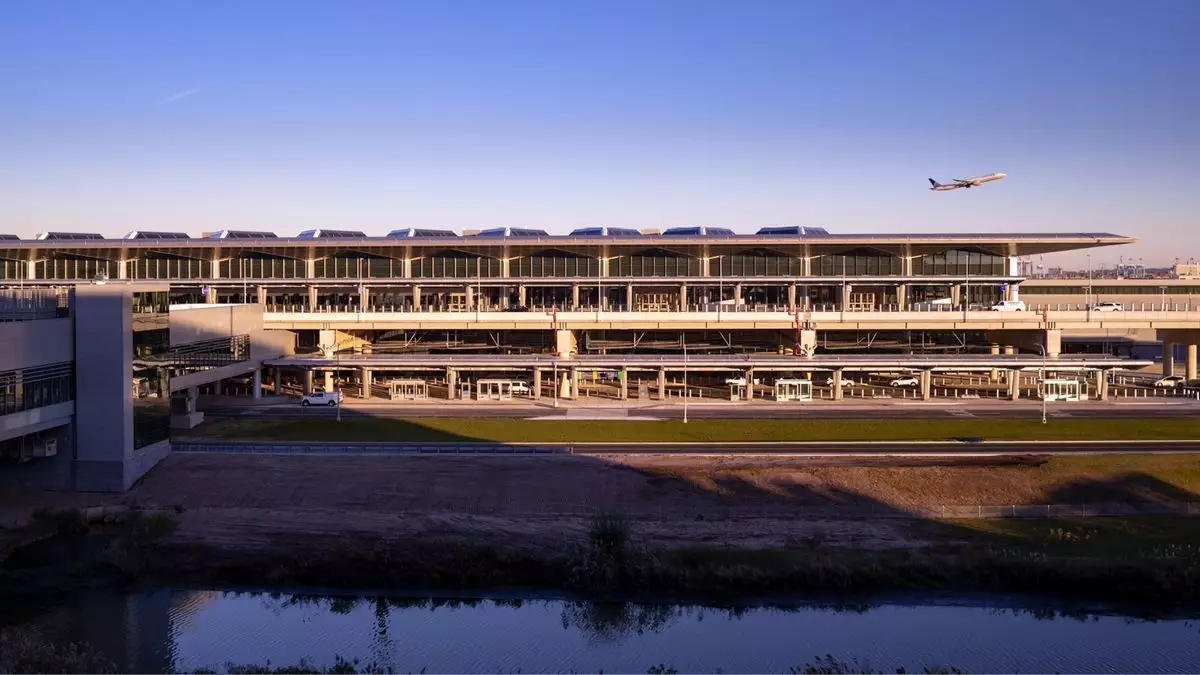The operational integrity of Newark Airport has been plagued by a series of technology outages, underscoring the vulnerabilities in the air traffic control system that’s critical to managing the ever-growing complexities of modern air travel. The Federal Aviation Administration (FAA) has confirmed that these outages are not mere inconveniences but have led to sustained disruptions, forcing air traffic controllers to take leaves of absence to cope with unprecedented stress levels. This has created a cascading effect on flight operations, notably for United Airlines, which has been compelled to cancel a significant number of flights each day. With air travel demand rising, it is imperative to scrutinize the systemic failures contributing to this crisis.
The past several weeks have seen an alarming uptick in flight cancellations and delays at Newark. Reports show that on May 6 alone, cancellations amounted to 12% of the daily schedule, with average departure delays exceeding a staggering 244 minutes. Such statistics are not just numbers; they represent thousands of travelers impacted by delays and cancellations. This deteriorating situation reflects deeper issues within the air traffic control framework, particularly stemming from outdated technology at the Philadelphia TRACON, which manages arrivals and departures for Newark.
Staffing Shortages Amplifying Operational Challenges
At the heart of Newark’s operational crisis lies a troubling staffing shortage in air traffic control. The FAA’s acknowledgment that controllers, overwhelmed by persistent equipment malfunctions, have taken trauma leaves is particularly worrisome. The specialized nature of air traffic control means that hiring and training new personnel is not a swift process, leaving existing staff overburdened and stressed. Without adequate support, it is inevitably challenging for them to manage the complex flow of air traffic, especially under adverse conditions exacerbated by ongoing runway construction.
It’s troubling to note that this isn’t an isolated incident at Newark; it’s a systemic issue affecting many airports across the United States. The FAA has been operating with an antiquated system that cannot keep pace with rising air traffic demands. As Newark struggles to maintain a semblance of order, the underlying issues showcase the urgent need for reform.
Technology Failures: A Concerning Trend
When air traffic control technology fails, the consequences can be dire. The Wall Street Journal recently reported that a critical failure at the Philadelphia TRACON led to a loss of radar and radio communications with aircraft approaching Newark, forcing those planes into a holding pattern for a perilous 90 seconds. Such incidents shake the very foundation of procedural safety and put lives at risk. The stress to controllers management under these circumstances is palpable, leading to alarming figures of trauma leaves taken. Relying on aging technology not only challenges operational feasibility but also erodes the confidence of both air traffic controllers and the flying public.
Moreover, FAA reports reveal that as many as 58 critical systems may not be sustainable, raising significant safety concerns. Transportation Secretary Sean Duffy’s calls for immediate funding to upgrade our national air traffic control systems have led to budget proposals that seek billions in investment. Yet, these upgrades may take years, leaving a vacuum in the interim as the FAA scrambles to ensure reliability with the current telecommunication equipment.
The Road to Modernization
A comprehensive overhaul of the air traffic control system is not a luxury; it is an urgent necessity. Modernizing this critical infrastructure will require a multifaceted approach involving significant financial investment, technological advancements, and, most importantly, a willingness to recognize the ongoing failures as not just operational hiccups but as an indictment of our commitment to safe air travel.
There is a silver lining in Secretary Duffy’s proactive stance on securing funds for air traffic control upgrades. The proposed multi-billion-dollar radar-replacement program is not just a technical fix; it represents a paradigm shift in how we perceive air traffic management in an age of rapid technological evolution. With Congress now debating significant funding proposals, stakeholders across the board must advocate vigorously for a system that prioritizes safety and efficiency.
As we move toward modernization, the FAA and the Transportation Department must prioritize transparency and engagement with the public. Air travelers have a right to understand the challenges that affect their journeys and to anticipate the concrete steps being taken to address them. Given the dysfunction currently observable at Newark, the urgency of reform cannot be overstated. We stand at a pivotal moment, where visionary leadership can make all the difference in transforming our skies into safe, timely, and stress-free avenues of travel.


Leave a Reply